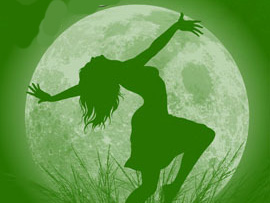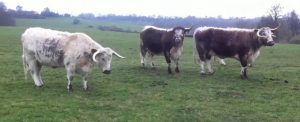Hereditary patronymic surnames, Ó (“grandson of”) and Mac (“son of”), were a central part of Gaelic Irish culture from at least the 11th century, testament to a deep need for public markers of family membership.
But this was not the product of some mystical Celtic yearning for blood connection. Far from it.

For almost 1,000 years, the main unit of Gaelic society was not the nuclear family as we conceive it, but a very particular version of the extended family, the derbhfhine, all the descendants of a common great-grandfather.
Among other things, property ownership rested with the derbhfhine, not the individual. So what you could own – cattle in particular – depended on who your kin were. No wonder genealogy loomed so large and surnames that signalled kinship were so important.

The name you bore was transparent to those around you, not just, as today, a convenient marker, but instead laden with resonance: stories, possessions, reputations, feuds, homeplaces . . . Gaelic surnames were deeply ingrained in everyday social interactions, as vital and ordinary as language or weather or food.
Imagine, then, the reactions of the Gaels when the first English arrived. John Bird? George Winterbottom? William Featherstone? The initial response must have been simple hilarity. How could there be people with such ludicrous names, telling nothing of parentage and kin?
The laughing can’t have lasted long. Over the course of the long, catastrophic 17th century, the old Gaelic institutions crumbled under the weight of the English conquest and took with them the centrality of Gaelic surnames.
And after only a few generations, those whose grandparents had laughed at the opaque stupidity of English names were having their own names mangled into opacity by English-speaking administrators: Harrington, Waters, Rabbit, Kidney, Boner . . . all names deriving from perfectly traditional and transparent O and Mac patronymics were stripped of all their old significance to force them into English.
Needless to say, the English perpetrated the same horror in Scotland.
My paternal Irish, Roman Catholic ancestors were from Cork and their names were Martin James Tobin (b. 26 Oct 1813, Brigown, Mitchelstown, Cork; d. 9 March 1854, Charlottenburgh Township, Glengarry, Canada West [now Ontario, Canada]) and his wife Bridget Catherine [known as Kathleen] Corcoran (b. Abt. 1823 somewhere in Cork; d. 13 Feb 1890 in Charlottenburgh, Glengarry County, Ontario, Canada). They came to Canada about 1841. I’ve since learned the Tobins were originally from Normandy but had been in Ireland since the 11th century. The name was originally St. Aubin, as they came from the village of Saint-Aubin in the department of Côte-d’Or of the french region Bourgogne. The family name of Tobin is an Anglicized form of Gaelic Tóibín, which is itself a reduced Gaelicized version of a Norman habitational name from Saint-Aubin.
Now my husband David’s 2x gr-grandfather was Thomas F. Petepiece (b. Abt. 1784 in Cloonacura, County Sligo; d. 24 Apr 1872 in Leeds and Grenville, Ontario, Canada). He, his wife, Catherine Sarah Stokes (b. Abt. 1784 in Tirerill Barony, County Sligo; d. 28 Jul 1864 in Oxford Township, Grenville, Canada West) and at least three of Thomas’ brothers came to Lanark County (just a wee bit S-W of Ottawa) Canada West from Sligo in 1829. I was certain Petepiece was surely no Irish name and through genealogy research, I’ve found it is definitely not, but again originally French.
David’s 5x gr-grandfather was Henri Richard Petie-Piere and he was born Abt. 1700 in Belgium. He was a Huguenot, among those who emigrated to Ireland at the invitation of the English, who wanted to suppress the Roman Catholics. He landed at Dundalk, Ireland in 1737, from Tournai, Belgium {this information was found in ‘The Trail of the Huguenots’ by Arthur Reamon on page 99. This book may be found in the Latter Day Saints Library, film #944E432}. The family members who still remain in Ireland spell their name Pettipiece but research in both Ireland and Canada will find many different spellings of the name, even within immediate families, i.e. Pettapiece, Pettipiece and other variations. One spelling was Pettipiere, so it is easy to see how the name could evolve from Petit-Piere to the present day spellings.
So that’s my story of the origin of our Irish ancestors, who it turns out were not at all very ‘Irish’ indeed (well perhaps the Corcorans are)!
Im also from cork . And one of my friends is tobin …. her name is denise ..there is also michelle ..i know the mam passed away bless her …but ill try share ur details to her and see can u make a connection ☘
Hello, Barbara. I’m researching Regan surname from Lanark Co, Ontario, also Irish immigrants arrival similar to Petepiece in 1820s.
“…my husband David’s 2x gr-grandfather was Thomas F. Petepiece. He, his wife, Catherine Sarah Stokes…and at least three of Thomas’ brothers came to Lanark County”
Love to connect.
Thank you for this one Mr. Grenham … I shall go away with some of the most important words I have heard … despite not being able to have located specific ancestors… “The name you bore was transparent to those around you, not just, as today, a convenient marker, but instead laden with resonance: stories, possessions, reputations, feuds, homeplaces . . . Gaelic surnames were deeply ingrained in everyday social interactions, as vital and ordinary as language or weather or food.” A connection to the past.
These words make me feel closer to those of mine that went before me …even though I may not have found them as yet … their stories are real!!!!
My cousin Co. Galway still raises cattle on the farm my grandfather came from. We are both descendants of a common great-grandfather, John Mannion. I wonder, does this make me entitled to some cows? My cousin explained the complicated paperwork and pedigrees involved in buying and selling cattle now, to prevent the spread of disease.
Not on your nelly Maryanne! Nearly all my ancestors were farmers from Kilkenny with plenty of cousins still inhabiting and farming the various home places. They would all be great company and happy to have a chat and answer any questions about family stories but if you asked for a few heifers or bullocks you would never be let darken the door again!
Hi Maryanne,
My great great grandfather was John Mannion also, from the Athenry area. He left in 1883 with his third wife and children for Australia. My branch, from the first wife, came here to the U.S. I’m sure it was a different John Mannion, the name is very common in Galway, but I had to reply when I saw the name!
We inherited no livestock, but my great grandfather, John Mannion, here in Massachusetts raised cattle and listed his occupation as farmer and cattle trader!
Judy Mannion
I think our cousins and second cousins who share our great grandfather, Francis Cassidy, of Drumbar, Donegal, who was a successful dairy farmer would object if we tried a modern day cattle raid. Even based on the old tradition, it wouldn’t happen today based on
I have seen my cousin’s female ancestor and the ancestor’s sister use different maiden names on birth and baptismal records just days apart in the Addergoole/Milltown area of County Galway. The names were Greaney and Conry. Likewise outside of Gaelic Catholic culture I have seen German Protestants use their biological father’s name for birth certificates and then be listed by their stepfather’s surname in the Reformed baptismal register; Delgman and Witthoff and then this lady’s daughter had a similar situation with the names Boschert and Tregoning(not German but apparently Cornish). Names always involve a little mystery.
Hi Judith,
Yes, a different John Mannion, my great-grandfather stayed in Kiltullagh, right next to Athenry, and my grandfather with the same name, born around 1872, came to America. There are certainly many Mannions in the area and a lot are named John. Also many with wives named Mary, mine was Mary Connolly. I think I have seen the Ancestry tree of the one with three wives who went to Australia. It seems original first names were not a thing in 19th century Galway. The latest generation of children in my cousin’s family there all have old Irish names like Darraigh and Roisin.
I would not dream of stealing my cousin’s cattle:-) But my father when he retired from an office job spent all his time outside working in his big garden which he loved. My grandfather took care of horses on a big estate when he came to America.
Hello John,
I really appreciate the sentiment you expressed here that surnames are just words, in the sense that they “don’t have DNA, go to any particular church, salute flags, vote or fight. They simply swim in the ever-changing sea of language, evolving as all languages do under the pressure of accents, education, fashion, politics, economics”. This is an excellent observation.
I am a relative newcomer to Irish genealogy, having only discovered an Irish connection in my paternal birth family in 2013. Since then, I have not made much progress beyond what the family history and documents tell me, but in my German families who migrated to the US, Steffen because Staffin and Buchmueller became Bookmiller, most likely via social pressure to assimilate long before the anti-German sentiment of the WWI era). Steffen became Staffin, Buchmueller became Bookmiller, for example.
Thank you for your cogent comments.
Cordially,
Chris
Your